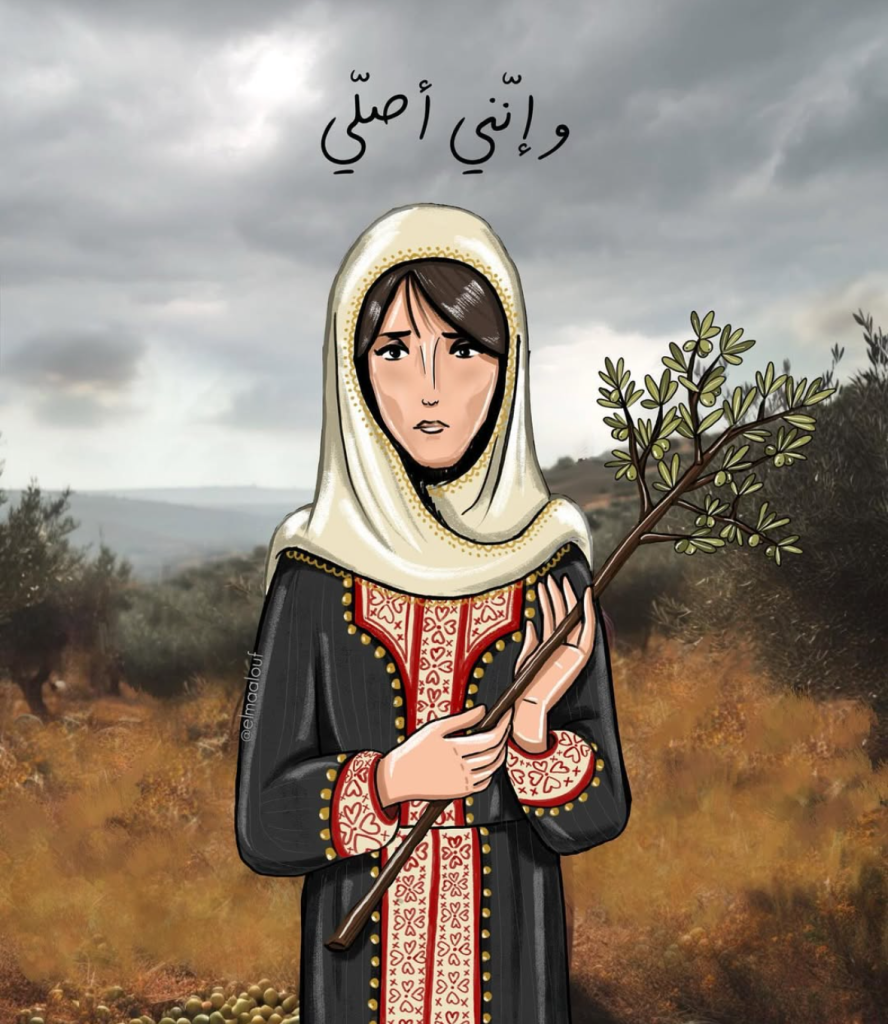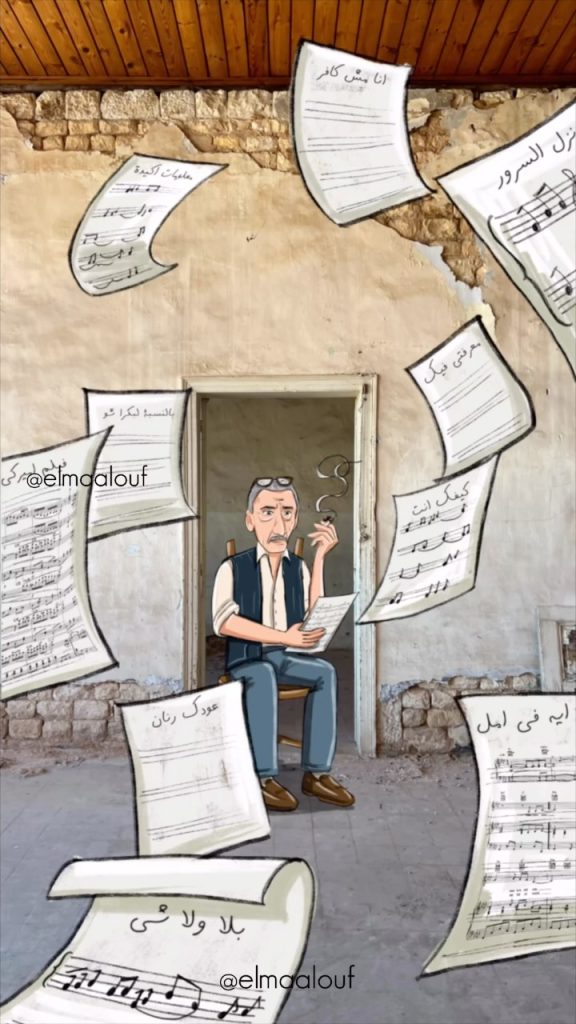For Beirut-based interior architect and illustrator Tony Maalouf, art was never just a passing interest — it was a lifelong instinct. “Honestly, ever since I was a kid, I’ve been drawn to art. I can’t even remember a time when I wasn’t doodling or creating something,” he says. “It’s always felt natural to me, and over time, that love just grew stronger. Pursuing it seriously wasn’t really a decision—it just made sense because it’s always been a big part of who I am.”
From the very beginning, he found support in the people around him. “My family and school were really supportive of my interest in art from early on,” he recalls. “My art teacher played a huge role—she always encouraged me and believed in my potential. She got me involved in a lot of national and regional competitions, as well as kids’ exhibitions, which really helped me grow and gain confidence. That kind of support made a big difference and pushed me to take art more seriously.”
That early encouragement eventually led him to study interior architecture, a choice that, as it turns out, deeply influenced his visual sensibilities. “I chose to study interior architecture because it’s closely related to art, and I felt it would give me a strong foundation in design,” he explains. “It really helped me understand how to see the composition of an illustration—how different elements work together in a space. I also learned a lot about how to use colors and shapes in a balanced, harmonious way, which has definitely shaped how I approach my illustrations today.”

The Process
Today, his work is a rich blend of illustration, photography, pop culture, and social commentary — a fusion that feels unmistakably his. “Yeah, it’s true—my work is definitely a mix of different things like illustration, photography, pop culture, and social commentary,” he says. “I’ve found that this combination feels like the most authentic way for me to express myself. It brings together everything I’m passionate about and helps me communicate ideas in a way that feels true to who I am. What’s really nice is that this style has also been relatable to others—people connect with the themes and visuals, which makes the work even more meaningful.”
When asked about his creative process, he describes it as intuitive yet structured. “Yeah, my creative process usually starts with an idea or a feeling I want to express—it can come from something I saw, a conversation, or even a random thought,” he explains. “I usually write it down or do a rough sketch just to get it out. Sometimes, even a song can inspire me—it gives me a vibe or mood, and I start imagining a reel that fits with my style. From there, I collect references, plan out the composition, and think about how to use color and shape to bring it all together. I mix different elements depending on what works best—drawing, photography, digital stuff—and keep tweaking until it feels right. The final image is always a mix of intuition and intentional choices.”
That process sometimes begins the old-fashioned way. “Sometimes I start with pencil and paper, especially if the idea isn’t totally clear yet and I need to work it out,” he says. “Other times, if I already have a clear vision in my head, I jump straight onto the iPad and start working digitally. It really just depends on the idea and what feels right in the moment.”

Between Playfulness, Depth and Resonation
Over time, several of his pieces have gone viral — something he attributes not to anything but honesty. “I think what makes my art resonate with people is just being authentic and true to myself,” he says. “Especially when I’m expressing feelings about events happening in my country or the region, or even when I share something nostalgic—people really connect with that honesty and realness.”
That sincerity also extends to the balance he strikes between humor and depth. “Yeah, I’m always trying to express myself honestly—not just making art for the sake of it,” he says. “Even when my work is playful, I want to respect the viewer’s mind and make them feel something deeper. So, I try to bring out an emotion or a perspective that adds a bit more meaning behind the fun.”
In Lebanon and Beyond
And Lebanon, as he points out, is always present — both consciously and subconsciously. “Lebanon is where I was born and where I still live today, so it’s a huge part of who I am,” he says. “I wouldn’t be able to create anything nostalgic if it didn’t connect to my childhood here. Art always reflects its environment, and that’s exactly what you see in my work—it’s what gives me my identity as an artist.”
That sense of identity hasn’t stopped his work from resonating far beyond home. “One of the things that really makes me happy is how my work connects with people outside Lebanon and the Lebanese diaspora,” he says. “I get messages and comments from all over the Arab world—like Egypt, Saudi Arabia, the UAE, Qatar, Kuwait, Jordan and even Iraq. I was also pretty surprised when companies in Europe reached out to me for collaborations because my reels caught their attention. It’s cool to see my work resonate with different audiences.”
Within the region, he’s also noticed a creative shift taking place. “Definitely, the digital illustration scene in Lebanon and the region is growing a lot,” he says. “A big part of that is thanks to social media, and I feel lucky to be part of it—it’s made it easier for artists like me to share our work and connect with others.”
On AI and Authenticity
And while many conversations in the art world revolve around AI, his take is refreshingly grounded. “AI is definitely becoming a part of our daily lives and will play a bigger role in the future,” he says. “I see it more as a tool or a helpful assistant, but it can’t really create authentic art because it hasn’t lived the experiences that inspire real creativity. It can imitate, but it can never truly create from the heart.”
On the Horizon
Among the projects that stand out to him, one holds special meaning. “I never post any reel or artwork unless I’m completely satisfied and proud of it,” he says. “But I’m definitely proud of a lot of my pieces, especially one I did using a voice-over of Ziad Rahbani talking about how you should laugh your way through your day. That one really means a lot to me.”

Looking ahead, he’s open to new directions — especially those tied to another cultural anchor from his youth. “I’m always up for experimenting with new mediums and ideas,” he says. “One thing I’m lately trying to do is connecting more with Egyptian culture since it was a big part of my childhood—like all the Egyptian music, movies, series, and fawazir. It’d be cool to bring that into my work more.”
As for his message to young artists finding their footing in Lebanon? He keeps it simple: “I’d say never be afraid to express yourself and don’t try to imitate others—because that won’t make you unique. Your own voice is what really matters.”



